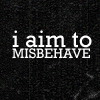Shikoku, my Japanese island home, is famous for a couple of things. Udon is ridiculously well-known here (and quite tasty!), and mikans are a staple of any school lunch. But perhaps one of the best known traditions in Shikoku is the 88 temple pilgrimage. A famous Buddhist monk by the name of Koukai supposedly traveled or helped build these 88 temples around the end of the 8th century and the beginning of the 9th, and in homage, pilgrims visit the 88 temples in his honor.
Every prefecture has their own special little traditions, and yesterday, many Kagawa JETs gathered to do a small leg of the 88 temple trip, with 6 of the temples right in a small area.
We started at temple 77, in Tadotsu at about 9 am. We went all out; not only were we walking the 6 temple route, as per tradition, but we wore the traditional pilgrim (or "Henro," which is what they call the pilgrims) garb: a walking stick, a bell to scare away animals (and used in meditation), a white smock, a sedge hat, and a purple prayer sash. Next, we went to temple 76, even though it’s bad luck to go backwards rather than in order.
After we’d gotten lost, and then explored 76 a little bit, we took the very, very long route to temple 72. 73 was next, and at temple 73 we had lunch. Temple 73 has an interesting story: Koukai supposedly stood on a cliff, and said that either he would save humanity, or die trying. If he survived the fall off the cliff, obviously, he would succeed in showing humanity the road to enlightenment. So Buddha stretched out his hand and saved him, and Koukai went on to become an accomplished Buddhist monk, as well as one of the best calligraphers in the world.
Also, temple 73 was originally high up on the mountain, but about a century ago they decided that was very inconvenient and they moved it much further down. The site of Zentsuji from the current temple is still very impressive, and the ruins of the old temple way up on the cliff are still visible.
74 was a smaller temple, and had a nice steep climb up a cliff only to reveal a rusty children’s park.
75, though, is the big one. Zentsuji was actually Koukai’s birthplace, so the temple located around his actual birthplace is very impressive. There is a 5 story pagoda at one end, and a main hall with red carpet and dozens of old, golden lanterns hanging from the ceiling. There is also an 1000 year old tree right in the vicinity where Koukai wrote one of his famous texts.
When we finally reached temple 75 at about 3, one of the monks gave us a tour of the main hall, including the dark tunnel. You go down a flight of stairs into a tunnel that is completely dark; absolutely no light and no talking are allowed. The tunnel stretches from one end of the main hall to the other, and the only way you can avoid getting lost is to keep your left hand on the wall. The tunnel is meant to reinforce how dependent you are on your eyes, and to give you reflection on your deeds as a human being. Halfway through there is also a statue of Koukai and his parents, placed in the exact location where he was born.
It was an exhausting trip, but well worth it. The temples are spectacularly ornate, and as a lover of history, I was thrilled with how… ancient the places felt. You can also purchase a book that details each of the temples, and at each temple there is a brush master that will sign the page with temple's unique seal. The 88 temple pilgrimage is also a big part of Shikoku’s culture, and it granted me a glimpse into the fascinating history of Japan.
Also, just in case I didn’t mention, from temple 77 to temple 75, it’s about a ten mile walk. That walking stick came in very handy; though I heard bells for hours afterward.
Sunday, November 30, 2008
Subscribe to:
Post Comments (Atom)

No comments:
Post a Comment